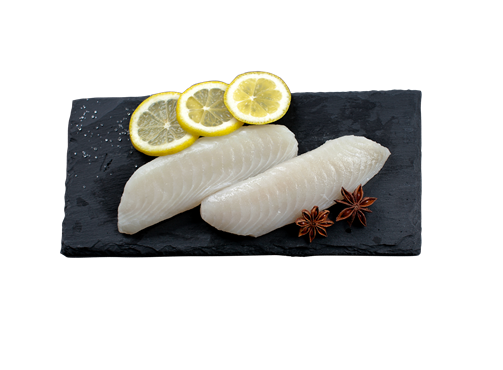Aloe identification
Shape identification
(1) Amethyst rhizomes are irregularly nodular or slightly beaded cylindrical, and some are curved, usually one branch, 3-10 cm long and 1-2 cm in diameter. The surface is yellow-brown to gray-brown, with fine longitudinals, wrinkles, and a few residual fibrous roots. There are often shallow transverse grooves in the joints. There are round scars between the nodes, often with residual stems at one end and occasional scars. Some precipitate white flocculent crystals on the surface. Solid quality, easy to break, cross-section is slightly uneven, white or yellow-white, scattered most orange or brown red oil room (commonly known as cinnabar point), exposure is slightly longer, white fine needle-like crystals can be precipitated. The cross-section was not blue fluorescent under ultraviolet light (254 nm). Rich in aroma, slightly sweet and bitter and pungent.
(2) Rhizoma Atractylodis rhizome is mostly lumpy, some are nodular, often curved and short-branched, 4-10cm long and 0.7-4cm in diameter. The surface is dark brown and has an outer oil chamber that does not give off crystals after being placed. The aroma is weak and bitter.
(3) The roots of Atractylodes lancea are mostly nodular cylindrical, 4-12cm long, 1-2.5cm in diameter, and dark brown on the surface. Lighter weight, broken section fiber. Gas-specific color, spicy and bitter.
It is better to have a solid quality, more cadmium spots, and a strong scent.
Microscopic identification
Atractylodes rhizome cross section:
1 There are 10 to 40 layers of cork cells in the cork layer. There are between 1 and several stone cells in between, and each stone cell has about 2-3 layers of rectangular stone cells integrated.
2 The cortex is broad, with large oil chambers scattered between them, with a long diameter of 225 to 450 μm. The phloem is narrow.
3 form a layer into a ring.
4 There are fiber bundles on the inside of the xylem, which are aligned with the catheter group. The 5 rays are wide, and there are oil chambers in both the ray and the pith.
The parenchyma cells contain inulin and fine calcium oxalate crystals.
Cross-section of rhizome of Atractylodes lancea: There are fiber bundles in the cortex, and the fiber bundles in the xylem are relatively large, and they are aligned with the catheters.
Atractylodes powder: brown.
1 Stone cells are single or in groups. They are round, oblong or polygonal in shape, light yellow or yellow, and are 20-80 μm long. The walls are extremely thick, woody, with prominent pits or pores, and are often associated with cork cells.
2 Fibrous spindles, often bundled, with narrow cells, some with blunt ends and large cavities.
3 The catheter section is short, the main is a net pattern, and there are bordered pits.
4 Calcium oxalate has small needles, 5-30 μm in length, and irregularly stuffs in parenchyma cells.
5 Oil room debris more common.
6 Inulin crystallizes into a fan or block, with a radial texture on the surface.
(3) Thin-layer chromatography Atractylodes lanceolata, Atractylodes lancea, and Atractylodes lancea powder each 50-100g, and the essential oil was extracted with a volatile oil extractor. Aspirate a certain amount of volatiles and dilute with ethyl acetate to a 10% deep liquid as a deep liquid for the test. Separately, a mixed solution of Atractylone, Atractylodin, Maofu alcohol, and Sterol was used as a reference deep liquid. Take the deep liquid and reference solution for the sample, and point it on the same silica gel G (Qingdao) thin plate. It was developed with benzene-ethyl acetate-hexane (15:15:70) with a 20 cm spread. Remove and dry it. The spray was developed with 10% sulfuric acid deep solution containing 5% p-dimethylaminobenzazem: after spraying, it was baked at 100°C for 5 minutes. The chromatogram of the test product was in the corresponding position with the reference substance, showing the spots of the same color. After the coloring agent was sprayed, Atractylone immediately showed a red color and was purple after baking; Atractylodin, Maoshu alcohol, and Emu oil were not developed after the coloring agent was sprayed. The oleyl alcohol is brown. [3]
Physical and chemical identification
Take powder 1g, add ether 5ml, shaking leaching for 15 minutes, filtered. 2ml of the filtrate was taken and placed in an evaporating dish. After ether was volatilized, 1ml of a 10% sulphuric acid solution containing 5% p-dimethylaminobenzaldehyde was added, and the rose was red, and bake at 100°C for 5 minutes. [3]
Atractylodes rhizome contains:
Volatile oil 3.25%-6.92%, containing 2-carene,
1,3,4,5,6,7-hexahydro-2,5,5-trimethyl-2H-2,4α-bridged ethylene naphthalene (1,3,4,5,6,7-hexahydro-2, 5,5-trimethyl-2H-2,4α-ethanonaphthalene),
Î’-maalinene,
Chamigrene,
Caryophyllene,
Elemene,
Humulene,
Selinene,
Patchoulene,
1,9-aristolodiene (1,9-aristolodiene),
Guaiol, elemol, atractylone,
Schizophenone [seli-na-4(14),7(11)-diene-8-one],
Atractylodin,hinesol,
β-Ecohol
(β-eudesmol) [1, 2] and so on.
The rootstock also contains furlade-hyde.
Acetoxy atractylone (3β-acetoxyatractylone),
3β-hydroxyatracetylone,
Alendronate (butenoliede) B et al. It also contains tryptophane,
3,5-dimethoxy-4-glucosyloxy phenylallylalcohol and 2-(1,4α-dimethyl-3-glucose-2) -keto-2,3,4,4α5,6,7,8-octahydronaphthalen-7-yl)
Isopropanol glucoside [2-(1,4α-dimethyl-3-glucosyloy-2-oxo-2,3,4,4α5,6,7,8-octahydronaphthalen-7-yl)-isopropanolglucoside],
2-[8-Methyl-2,8,9-trihydroxy-2-hydroxymethylbicyclo[5.3.0]nona-7-yl]isopropanol glucoside {2-[8-methyl-2 ,8,9-trihydroxy-2-hydroxymethyl-bicyclo[5.3.0]decan-7-yl]isopropanogllucoside},
2-[8-Methyl-2,8-dihydroxy-9-keto-2-hydroxymethylbicyclo[5,3,0]nonan-7-yl]isopropanol glycoside {2-[8- Methyl-2,8-dihydroxy-9-oxo-2-hydroxymethylbicyclo[5,3,0]decan-7-yl]isopropanolglucoside},
2-(1,4α-dimethyl-2,3-dihydroxydecahydronaphthalene-7-yl) glucosinolate[2-(1,4α-dimethyl-2,3-dihydroxydec-ahydroxynaphthalen-7-yl)] Isopropanol glucoside] and other water soluble ingredients such as 8 sesquiterpene glycosides.
Also contains cobalt, chromium, copper, manganese, molybdenum, nickel, tin vanadium zinc, iron phosphorus, aluminum zirconium, titanium, magnesium, calcium and other inorganic elements.
Rhizoma Atractylodis Rhizome contains:
Volatile oil 1.5%,
Mainly contains β-eucalyptus and Atractylodine,
Also contains beta-selenwood,
Left-handed alpha-bisabolol,
Maoshu alcohol [8], elixir, atractylone, celeryendione and so on.
It also contains polyacetylene compounds: atractyoldinol, acetyl α-tractylodinol.
We are a pioneer of tilapia processor in Southern China and with the unique ability and perfect location.
With intensely developed farming and processing technology, we have established a comprehensive procedure from farming industry to processing till consumer.
This procedure gives our company the unique traceability and QA system that guarantees products quality all the time.
Tilapia Loin

Tilapia Fish Boneless,Frozen Tilapia Loin,Ivp Frozen Seafood,Tilapia Fish Loin
Guangzhou Luxe Seafood Enterprises Ltd. , https://www.seafoodluxe.com